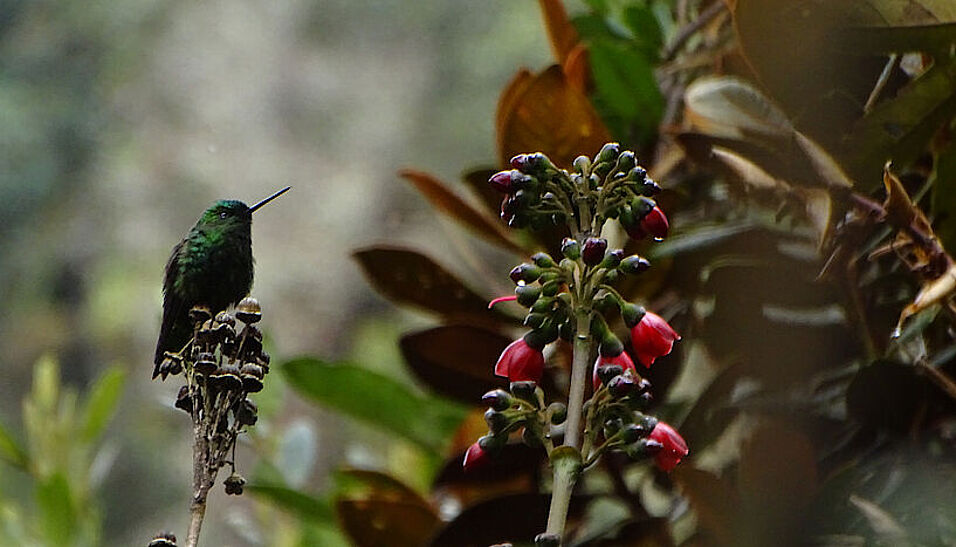How does it happen that the pollinators of a plant species change during evolution? "Theoretical concepts say that extrinsic factors, such as changes in climate, are primarily responsible," says Agnes Dellinger of the Department of Botany and Biodiversity Research at the University of Vienna. These theories assume that climatic changes reduce the abundance of the original pollinator (e.g., a bee species) and that flowers can adapt to a different pollinator over longer evolutionary periods. To date, however, these theories have received little empirical investigation. Plant groups that are common at both low elevations and in mountains are particularly suited to testing these theories because they offer the opportunity to study pollinators in the context of climatic differences along elevation contours.
Over the course of five expeditions, the researchers studied eleven plant species of the blackmouth family in the lowland and mountain rainforests of Costa Rica, Ecuador and Colombia as part of an FWF project. "We found that bees were frequent flower visitors in the lowlands, where the plant group studied probably has its evolutionary origin," Dellinger explains. Over the last five million years, these plants have also spread into the new mountain habitats created - by the unfolding of the Andes. "At this altitude of about 2,400 to about 3,300 meters, bees are very rare flower visitors, while vertebrates such as bats, hummingbirds and passerine birds are common visitors to flowers," Dellinger says.
These vertebrates transport larger amounts of pollen between flowers compared to bees in tropical mountain rainforests. This more efficient pollen transfer by vertebrates is very likely an important factor in the evolution of pollinator switches.
"Switching from bee to vertebrate pollination has occurred in blackmouth plants exclusively in mountain forests, where the climate is generally wetter, cooler and windier than in lowland rainforests," Dellinger said. Flowers have also adapted in their functioning and morphology to the new vertebrate pollinators over long evolutionary periods.
Will climate change also lead to pollinator changes and the corresponding adaptations? "There will probably be changes in the abundance of different flower visitors," Dellinger says. However, it is questionable whether the adaptation of flowers to new pollinators can keep up with the current very rapidly changing climate.
Publication in New Phytologist:
Low bee visitation rates explain pollinator shifts to vertebrates in tropical mountains. Agnes S. Dellinger, Rocío Pérez-Barrales, Fabián A. Michelangeli, Darin S. Penneys, Diana M. Fernández-Fernández, Jürg Schönenberger
DOI: 10.1111/NPH.17390

